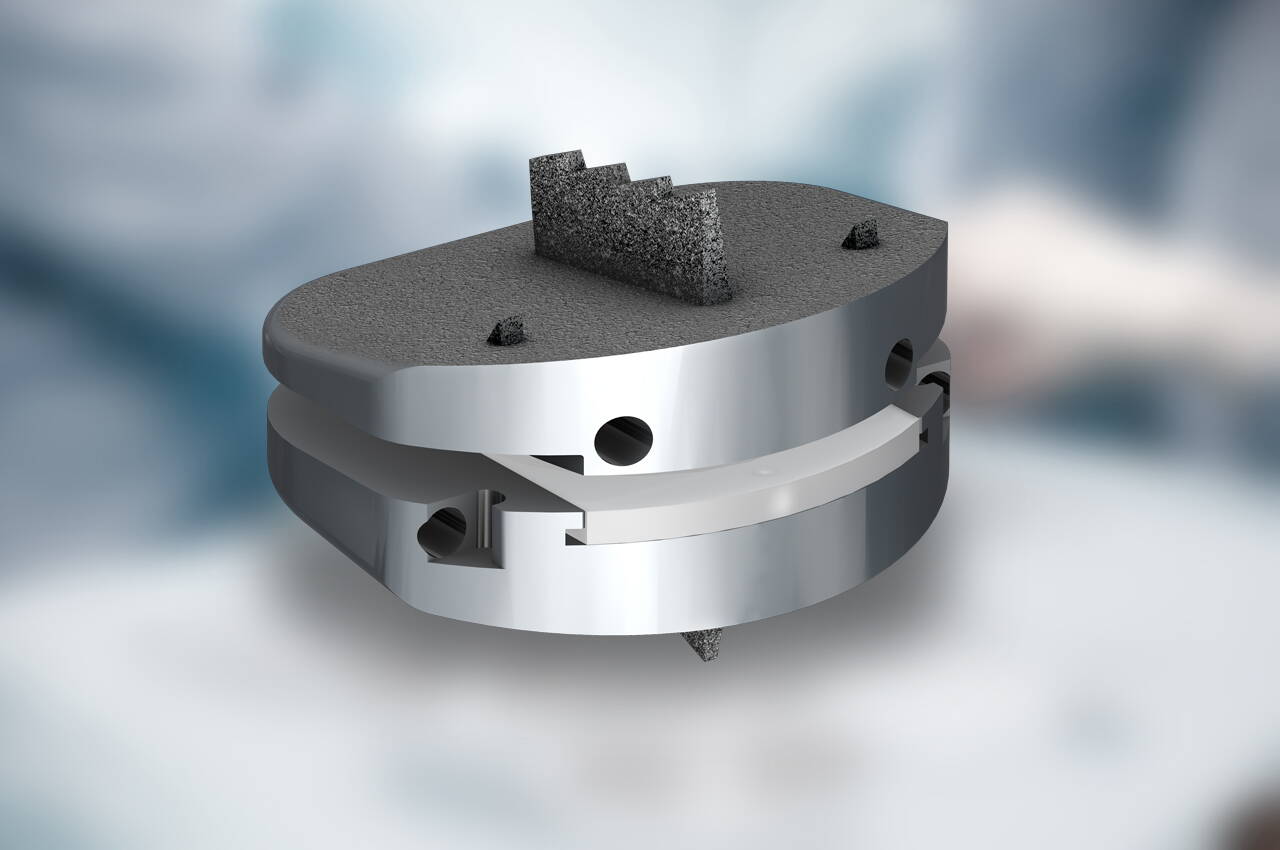Prodisc-L
The Prodisc-L implants are used to replace a lumbar disc in order to restore disc height and maintain segmental movement.
What is the clinical problem?
Vertebral fusion is often regarded as the standard therapy for the surgical treatment of degenerative disc problems in the lumbar spine. This procedure is successful in many patients, but leads to a loss of mobility and flexibility in the operated segment.
With the Prodisc L, the mobility between the vertebrae and in the operated segment is maintained. In addition, the neighbouring segments are subjected to a lower load compared to a fusion.
How does Prodisc L work?
The Prodisc L consists of a cranial and a caudal implant endplate. The inlay is made of ultra-high molecular weight polyethylene. The end plates are available with different lordotic angles to optimally adjust the lordosis. The ball-and-socket joint principle of the prosthesis enables a physiological range of movement in terms of flexion/extension, rotation and lateral tilt. To implant the prosthesis, the intervertebral disc is removed via a ventral approach and the segment is mobilised. In order to achieve optimum primary stability, a groove is chiselled for the keel of the prosthesis. The end plates are then implanted and the inlay is inserted between them to complete the procedure.
Results Prodisc L
With over 30 years of clinical experience and more than 400 studies, Prodisc L is one of the best-documented lumbar disc prostheses. The results show high patient satisfaction, reduced pain and reduced degeneration of adjacent segments compared to fusion.
Literatur
Ziegler JE, Delamarter RB. Five-year results of the multicentre, prospective, randomised, controlled ProDisc L trial comparing ProDisc L with circumferential spinal fusion for single-level degenerative disc disease. J Neurosurg Spine 17: 493-501. 2012
Ziegler JE, Glenn J, Delamarter RB. Five-year degenerative changes at adjacent levels in patients with unilateral disease treated with lumbar disc replacement with ProDisc L versus circumferential fusion. J Neurosurg Spine 17: 504-511, 2012.
Siepe CJ, Heider F, Wiechert K, Hitzl W, Ishak B, Mayer MH. Mid- to long-term results of total lumbar disc replacement: a prospective analysis with 5- to 10-year follow-up. Spine J. 2014 Aug 1; 14(8): 1417-31.doi: 10.1016/j.spinee.2013.08.028. Epub 2014 Jan 18.
Tumialán LM, Ponton RP, Garvin A, Gluf WM. Arthroplasty in the military: an initial experience with Prodisc-C and ProDisc-L. Neurosurg Focus. 2010 May; 28(5): E18

